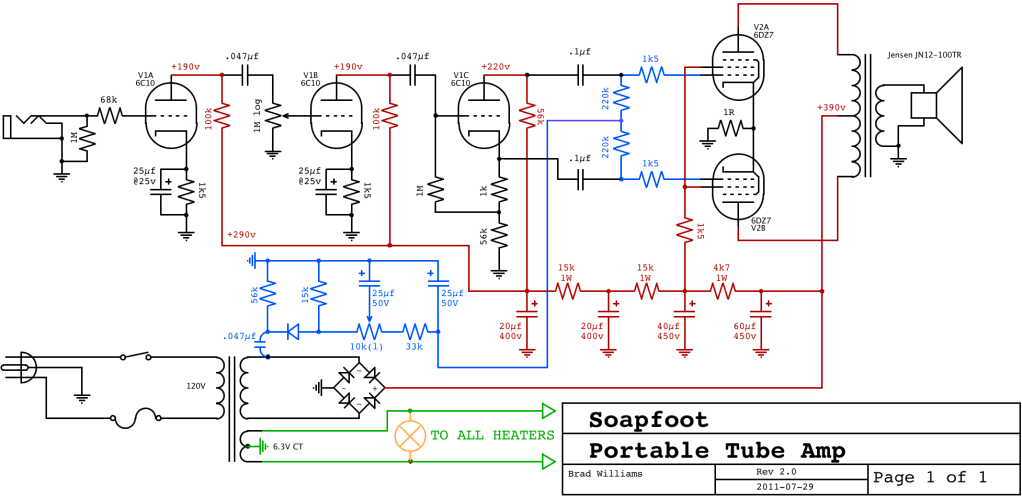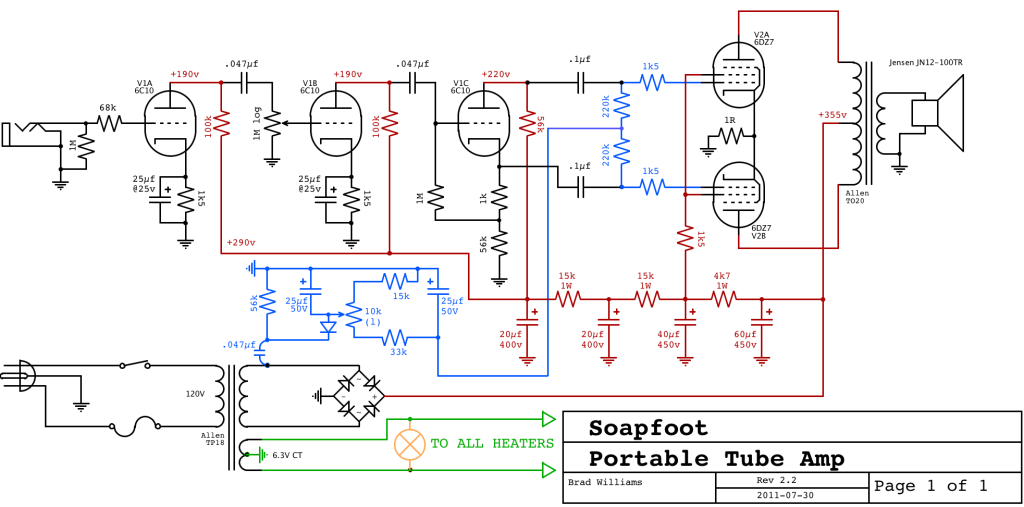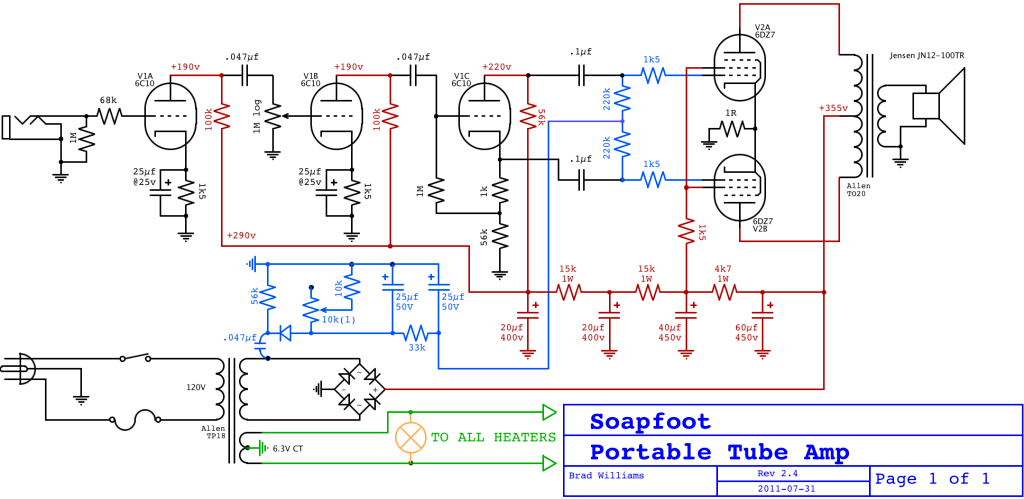soapfoot
Well-known member
lassoharp said:How much safety margin should I allow when calculating heater current capacity? Current draw from a 6.3V bayonet base lamp, plus a 6C10 plus a 6DZ7, plus what percentage of that total for safety? 50%? 100%?
AC are heaters normally ran at full rated load so that final voltage will be as close to spec as possible.
You will likely run a little higher than 6.3V @ 50% and this will probably differ slightly from transformer to transformer. If winding is rated 6.3V @ 2A, run at 2A, you will be fine.
The HT winding is often ran at 50% or less just so the transformer runs cool.
Great info, thanks. I've still gotta figure out what I need to do for a PT. Might have to get one custom spec'd so it can be as light as is practical.
For the OT, I found out that Dave Allen sells a Heyboer transformer designed for 2x EL84 or 2x 6V6. It's designed as a better-sounding replacement for the puny transformer that comes stock on the Pro Junior, Blues Junior, Princeton Reverb, etc. The only drag is that it weighs 1.5 lbs as opposed to about 15 oz. for the smaller-core Pro Junior transformer. I think that's just a tradeoff I'm going to have to make... about half a pound is something I can live with for perhaps a touch of headroom and cleaner bass when cranked. The other upside is that it's about $50 for a quality, USA-made product with high-grade steel. Yes, there are cheaper transformers but for something that nice, it's a fair price.
This is starting to come together nicely in my head. I'm hoping I can make this a reality sooner-than-later.































![Soldering Iron Kit, 120W LED Digital Advanced Solder Iron Soldering Gun kit, 110V Welding Tools, Smart Temperature Control [356℉-932℉], Extra 5pcs Tips, Auto Sleep, Temp Calibration, Orange](https://m.media-amazon.com/images/I/51sFKu9SdeL._SL500_.jpg)





